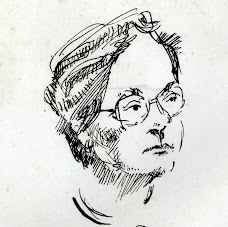In This World is
not a documentary, although it has the cinematic feel of one, complete with subtitles, map graphics, and plonking voiceovers. The description on the Netflix envelope said it was a documentary, showing that whoever wrote it did not look at the closing credits and the production notes, in which the director (Michael Winterbottom) describes the filming process and says "This is not a documentary, it's fiction."
The story (categorized by Wikipedia as a docudrama) follows two Afghan refugees on a journey from Pakistan to London, overland and illegal. Winterbottom says that he wanted his two actors (amateurs by the way) to represent the millions of refugees all over the world. Jamal, who's about 11 and speaks English, and Enayat, who appears about 20 and does not, are helped with money from an uncle paid to various "fixers" along the way. They travel by various means -- bus, in the back of an open truck, hidden in trucks carrying cargo, on foot through the mountains, and in an enclosed truck within a freighter from Turkey to Trieste. Every border crossing and every sight of an official is fraught with peril -- even at the beginning of their journey, in Pakistan, where Jamal was actually born in the refugee camp, they are suspect foreigners. The worst danger is on the ship, and when Jamal reaches Trieste, he must go on alone.
The film was shot with minimal crew -- a cameraman and a sound man using as unobtrusive equipment as possible (digital video was mentioned). In some scenes, such as the night mountain crossing on the Iranian-Turkish border and in the hold of the ship, it's very hard to see, just as if one of the participants had a small camera along. This definitely adds to the documentary feel of the film. Also, the director stated that the main actors didn't have a real script and just said what they wanted to. The endearing Jamal, for instance, frequently makes up not-quite-funny jokes that he tells to Enayat or anyone who'll listen, much like eleven-year-old boys anywhere.
Two more recurring scenes seemed to be important in the film (and I assume this was an editing decision). One, I think, was meant to underscore the difficulties of maintaining the boys' Muslim religion during this exodus. They're frequently shown washing their faces, hands, and feet much more carefully than most guys their age from non-Muslim backgrounds would under their circumstances. At the end, in London, Jamal, whom we've mostly seen in pretty basic if not squalid settings, goes to a beautiful and lavishly appointed mosque and prays fervently.
The other theme is soccer -- in spite of the perilous journey they've undertaken, Jamal and Enayat are still young boys and they seize any rare opportunity for a pick-up soccer game with other young men they encounter, whether among Kurdish people in northern Iran or on the beach in France while awaiting an opportunity to stow away on a truck bound for London. The Kurds, by the way, are the only people shown who seem to be helping the boys along on their journey out of the goodness of their hearts rather than solely for money, probably because they know what it is to be refugees themselves.
In This World was a very effective film in showing the plight of the refugee. It definitely had a political agenda; although the voice-overs mention that many Afghan refugees came to Pakistan as early as 1979, much is made of the more recent (at the time the film was being shot) arrivals of people fleeing U.S. bombing raids. I would have liked a little more description of exactly what was going on at times, and more background information, but on the other hand, the film is only an hour and 28 minutes long and, given the sometimes-difficult camera work, the dialogue frequently in various languages and not consistently subtitled, and the harrowing events, perhaps I wouldn't have wanted it to go on much longer. I think it's well worth seeing.

